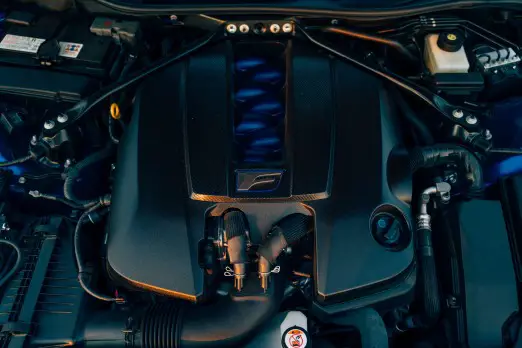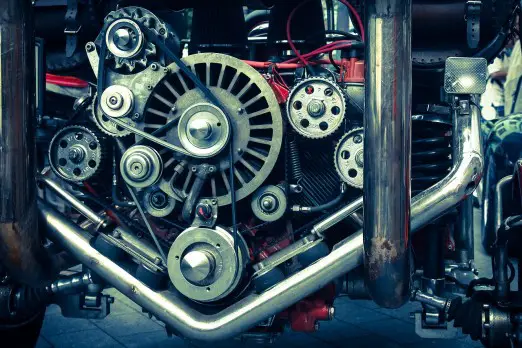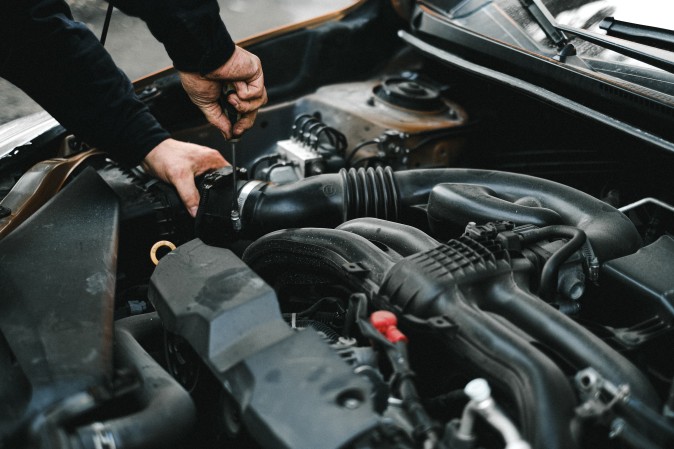The humble head gasket is an important component in the complex dance of parts that make up a car engine. It is a seal that keeps the combustion process contained inside the engine’s cylinders. Head gaskets are prone to wear and tear, just like any other component, and their failure can have a major impact on the engine’s performance. It’s critical for us as car owners to recognize the warning indications of a failing head gasket and comprehend the subtleties of the repair procedure. The expense of head gasket repair is one crucial factor that frequently causes automobile owners great concern.
Importance of timely head gasket repair:
Maintaining a vehicle’s engine’s longevity and peak performance requires prompt head gasket maintenance. The head gasket, which acts as a vital seal between the engine block and cylinder head, stops vital fluid leaks and guarantees ideal combustion chamber conditions. Preventing additional damage requires identifying the early indicators of head gasket problems, which include coolant or oil leaks and engine misfires. Ignoring these signs, particularly the overheating of the engine can set off a chain reaction that increases the chance of catastrophic engine failure over time and escalates maintenance expenses. Aside from the obvious financial cost, ignored head gasket issues can seriously lower a car’s market value.

Understanding Head Gasket Functionality:
Gaining an understanding of the head gasket’s operation is essential to appreciate its importance to the overall operation of an internal combustion engine. Situated between the cylinder head and the engine block, the head gasket is an essential part of the engine. Its main purpose is to form a seal between the coolant tubes and oil channels and the engine’s combustion chambers.
Here are key points to understand about the functionality of a head gasket:
Sealing the Combustion Chambers:
- The air and fuel mixture ignites in the combustion chambers to produce the power required to propel the vehicle.
- To keep the pressurized gases created during combustion inside the engine block and cylinder head, the head gasket creates a tight seal.
- By directing the high-pressure gases toward the piston, this seal makes sure that the piston travels downward and drives the crankshaft.
Separating Coolant and Oil Passages:
- The engine needs oil passageways for lubrication and a cooling system to control temperature.
- By sealing the gaps between the combustion chambers and the coolant/oil passageways, the head gasket stops coolant and oil from combining.
- Any crack in this seal could allow for cross-contamination, which could damage the engine and result in overheating and lubrication loss.
Maintaining Compression:
- Keeping the combustion chambers’ proper compression is a crucial part of the head gasket’s job.
- For an engine to operate efficiently, compression created during combustion is necessary.
- A failed head gasket may cause compression to be lost, which would impair fuel efficiency, diminish power, and cause instability in the engine as a whole.
Accommodating Thermal Expansion:
- During operation, the engine experiences large temperature changes.
- For the head gasket to keep a good seal, it must be able to withstand temperature expansion and contraction.
- To guarantee that the head gasket can tolerate these temperature swings, high-quality components, and precision engineering are essential.
Signs of a Faulty Head Gasket:
Maintaining the health of your car’s engine requires you to be aware of the warning indications of a failing head gasket. Early diagnosis and treatment of these symptoms might help you avoid more harm and expensive repairs. The following are the main indicators that your car might have a bad head gasket:
Overheating:
- Even after typical driving circumstances, persistent engine overheating may indicate a damaged head gasket.
- The engine may overheat if the head gasket fails to adequately seal the combustion chambers, allowing coolant to seep into the cylinders.
Coolant Loss:
- If coolant levels suddenly drop without any obvious external leaks, there may be a head gasket issue.
- The coolant levels may be dropping because the head gasket is letting coolant seep into the combustion chambers or combine with the engine oil.

White Exhaust Smoke:
- Particularly when the engine is heated, white or light-gray smoke emerging from the exhaust pipe may indicate that coolant is getting into the combustion chambers.
- This is frequently accompanied by a sweet fragrance, which denotes coolant burning.
Milky or Frothy Oil:
- Examine the oil using the dipstick; if it seems foamy or milky, coolant contamination may be the cause.
- The oil’s lubricating qualities may be compromised by coolant combined with the oil due to a head gasket failure.
Excessive Pressure in the Coolant System:
- Pressure in the coolant system may rise as a result of a malfunctioning head gasket.
- As a result of the increased pressure, the radiator hoses may feel particularly hard or may rupture.
Poor Engine Performance:
- A head gasket issue may be indicated by a drop in engine power, rough idling, or reluctance when accelerating.
- A damaged head gasket can cause compression loss, which reduces engine performance.
Bubbles in the Radiator or Coolant Overflow Tank:
- Exhaust gases may be present in the coolant system if air bubbles are seen in the radiator or coolant overflow tank.
- This happens when the cooling system is exposed to combustion gases due to improper sealing of the head gasket.
- External Coolant or Oil Leaks:
- Some head gasket problems might not result in leaks outside, but others could generate leaks that are noticeable near the engine.
- Coolant or oil puddles beneath the car could be a sign of a head gasket issue, particularly if there are no other obvious causes.
Factors Influencing Head Gasket Repair Costs:
A head gasket repair’s price might vary greatly depending on several variables. Knowing these things can help you estimate the possible expenses of replacing a defective head gasket. The following are the main variables that affect head gasket repair costs:
Labor Costs:
- The cost of labour is a major factor in head gasket repairs. Depending on the vehicle’s make and model, the repair procedure’s complexity may change.
- Higher labor expenses can result from the more complex and difficult engines in luxury or high-performance cars.
- Variations in the total cost of repairs might also be attributed to labor costs at various repair facilities.
Parts and Materials:
- Repair costs can vary depending on the engine’s layout and design in each car.
- Some engine bay repairs require more time and labor than others due to varying degrees of accessibility to the head gasket.
- How simple it is to reach and replace the head gasket depends on the kind of engine (inline, V-shaped, horizontally opposed, etc.).
Vehicle-Specific Considerations:
- Repair costs can be influenced by the engine’s layout and design in various vehicles.
- Depending on how easily accessible the head gasket is in the engine bay, certain repairs need more time and effort than others.
- The simplicity of removing and replacing the head gasket can vary depending on the kind of engine (e.g., inline, V-shaped, horizontally opposed).
Engine Type and Size:
- Larger engines sometimes have more parts, which might make head gasket repair more difficult.
- Because of the intricacy of the engine design, high-performance or multi-cylinder engines may require more frequent repairs.
Location of the Repair Facility:
- The labor rates and total cost of repairs might be influenced by the repair facility’s geographic location.
- Labor rates may be greater in urban areas or places with a higher cost of living than in rural ones.
Additional Repairs:
- Sometimes a head gasket replacement reveals other problems that require attention, including a cylinder head that is distorted or engine parts that are damaged.
- The total cost of the repair job may go up if more repairs are required.
Warranty and Guarantees:
- Different guarantee terms may be offered by repair facilities for the lab hours and parts used in head gasket repairs.
- Choosing a facility with a longer warranty could result in greater upfront charges, but it can give you assurance about the caliber of the repair.

DIY vs. Professional Repairs:
- You might save money on labor if you decide to conduct the head gasket repair yourself (DIY), but you could still have to pay for components and supplies.
- Expertise is ensured by professional repairs, which may involve additional services that affect the final cost.
Average Head Gasket Repair Costs:
The make and model of the car, the extent of the damage, local labor costs, and whether you choose an independent repair shop or a dealership can all have a significant impact on the typical cost of head gasket repair. Here’s a rough estimate:
Low-End Estimate:
- The price range for head gasket repair for simpler cars and engines with smaller displacements is between $1,000 and $1,500.
- Usually, this estimate includes the price of labor, parts, and any additional supplies that will be required for the repair.
Mid-Range Estimate:
- For most cars, head gasket repair typically costs between $1,500 and $2,500.
- This mid-range estimate accounts for differences in labor rates, parts prices, and repair process complexity.
High-End Estimate:
- Head gasket repair costs can surpass $3,000 or even reach $5,000 or more for high-performance or luxury automobiles with more sophisticated engines. Higher costs can be attributed to extra repairs like cylinder head resurfacing as well as premium or OEM (Original Equipment Manufacturer) materials. Head gasket repair costs can surpass $3,000 or even reach $5,000 or more for high-performance or luxury automobiles with more sophisticated engines. Higher costs can be attributed to extra repairs like cylinder head resurfacing as well as premium or OEM (Original Equipment Manufacturer) materials.
Prevention and Maintenance:
Preventing head gasket difficulties and maintaining your vehicle’s engine health is vital for long-term reliability and performance. Here are some preventive measures and maintenance advances to limit the likelihood of head gasket failures:
- Cooling System Care:
- Check Check and flush the coolant on a flush the coolant on regular biangular Bassel with
- Deal with cooling system problems as soon as possible.
- Temperature Monitoring:
- Watch the engine temperature indicator.
- Cylinder Head Inspection:
- Regularly check for wear and leaks.
- Gentle Driving Habits:
- Give yourself time to warm up before driving.
- Till the motor is completely warmed, avoid using high RPMs.
- Avoid Overloading:
- Respect payload limits to prevent strain.
- Fuel Quality:
- To prevent deposits, use premium fuel.
- Prompt Action:
- Take prompt action in response to warning signs.
- Use OEM Parts:
- Think about using high-quality replacement parts.
Head Gasket
Frequently asked questions:
Does replacing a head gasket make sense?
If the cost of repair is reasonable given the worth of the car and the degree of the damage, replacing the head gasket may be a wise decision.
Can I drive with a damaged head gasket?
It is not advised to drive with a damaged head gasket since this could result in additional engine damage and safety hazards.
Is a head gasket a significant issue?
If neglected, a broken head gasket can seriously impair engine performance and necessitate expensive repairs.
Should I buy a new engine or fix my head gasket?
A new engine or a head gasket repair depends on your car’s general health, financial situation, and long-term goals.
Conclusion:
To sum up, proactive maintenance and preventive actions are essential to maintaining the integrity of the head gasket in your car. The likelihood of problems can be greatly decreased by routine inspections, adherence to maintenance plans, and quick action in the event of warning indications. By making these procedures a top priority, you may improve your car’s overall efficiency and dependability and extend the life of the head gasket.

